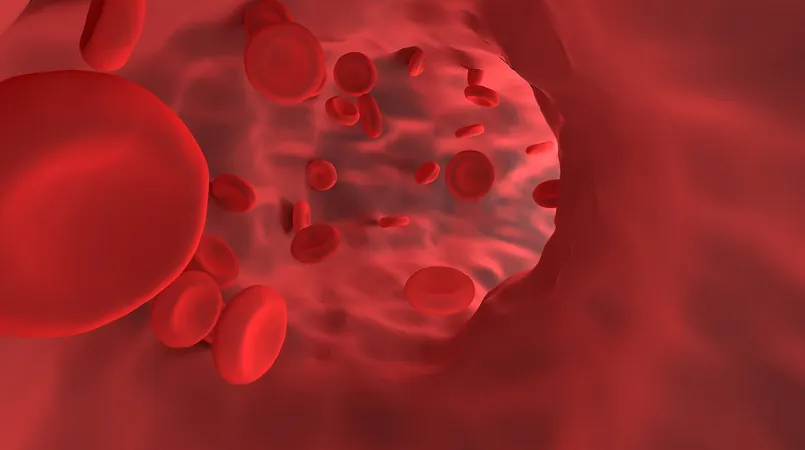
Revolutionary New Method to Predict Heart Risks in Young People
2025-09-02
Author: Daniel
Breakthrough in Heart Health Monitoring for Youth
A groundbreaking international study has established the first-ever reference measurements for blood vessel stiffness in healthy young individuals, potentially transforming how pediatric and adolescent clinics identify and manage cardiovascular disease risks for decades to come.
Pioneering Research Unveils Key Insights
Published in the journal Hypertension, this analysis collated results from over 19,930 participants aged between 1 to 40, all of whom met strict health criteria including blood pressure, body mass index, fasting glucose, and cholesterol levels. The focus? Assessing how flexible or stiff their blood vessels are—because increased rigidity can significantly heighten the risk of heart attacks and strokes.
Vikas Dharnidharka, a leading pediatric expert at Robert Wood Johnson Medical School and co-author of the study, remarked, "This gives us a tool we did not have. There's more work to do, but it's a vital first step toward guiding treatments that can save lives."
Understanding Pulse Wave Velocity: A Game Changer
The study employs pulse wave velocity (PWV) tests, which measure how swiftly pressure waves from the heart move through blood vessels. Stiffer arteries transmit these waves more quickly, revealing crucial insights about a person’s cardiovascular health that are often masked by conventional metrics.
While elevated PWV scores in adults are already known to predict heart problems regardless of other risk factors, prior to this study, there were no established healthy benchmarks for children and young adults.
Creating the Reference Charts: A Collaborative Effort
To derive these vital reference curves, the Youth Vascular Consortium—an international group focused on early vascular aging—analyzed data from studies across Europe, Australia, Africa, and the Americas and developed percentiles by age and sex for common PWV devices. The resulting charts resemble growth charts, depicting how arterial stiffness increases with age.
Given the variety of PWV devices using different algorithms, the research needed a large patient pool for accuracy, likening the situation to the outdated debate between VHS and Betamax formats.
Why This Matters: The Impact on Future Health Care
Although PWV testing is currently underutilized and often not covered by insurers, it’s a simple, noninvasive procedure that can be conducted with just a blood pressure cuff and a few basic tools.
The introduction of these reference charts can radically change patient management. For instance, if a teenager’s PWV score exceeds the 90th percentile, it may prompt immediate follow-up and treatment adjustments, especially if accompanied by obesity or elevated blood pressure.
As Dharnidharka notes, different blood pressure medications affect arterial stiffness differently, making PWV testing invaluable for tailoring treatment plans.
Looking Ahead: Paving the Way for Future Research
With these norms in place, future studies can delve deeper into optimal treatment strategies for patients facing early arterial stiffness. Long-term cohort studies and registries will be essential in this regard.
This unprecedented step in understanding arterial health in young people captures the evolution of stiffness from childhood to young adulthood, presenting an opportunity for early intervention and significantly improved long-term health outcomes.
"This was a critical step," Dharnidharka emphasized, highlighting the potential for transformative change in cardiovascular care for the next generation.
 Brasil (PT)
Brasil (PT)
 Canada (EN)
Canada (EN)
 Chile (ES)
Chile (ES)
 Česko (CS)
Česko (CS)
 대한민국 (KO)
대한민국 (KO)
 España (ES)
España (ES)
 France (FR)
France (FR)
 Hong Kong (EN)
Hong Kong (EN)
 Italia (IT)
Italia (IT)
 日本 (JA)
日本 (JA)
 Magyarország (HU)
Magyarország (HU)
 Norge (NO)
Norge (NO)
 Polska (PL)
Polska (PL)
 Schweiz (DE)
Schweiz (DE)
 Singapore (EN)
Singapore (EN)
 Sverige (SV)
Sverige (SV)
 Suomi (FI)
Suomi (FI)
 Türkiye (TR)
Türkiye (TR)
 الإمارات العربية المتحدة (AR)
الإمارات العربية المتحدة (AR)